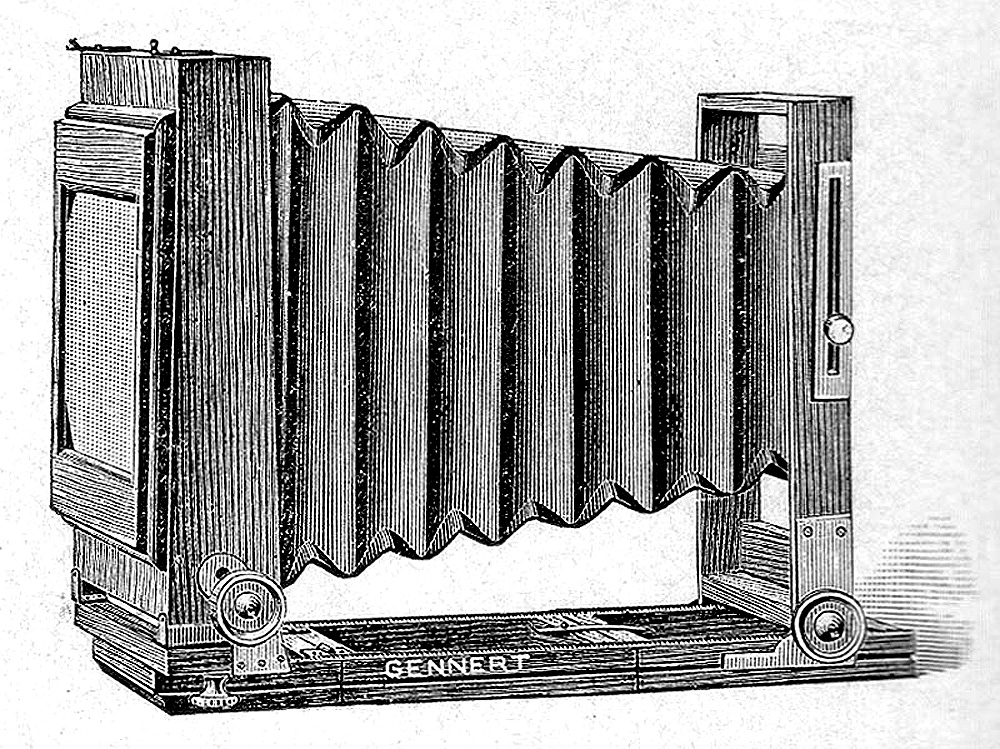G. Gennert, Rochester, New York, NY
Prize View Camera
5 x 8 (Single
Swing) Bottom Metal etched
(not engraved) label on front Stamp on back
top
6 ½ x 8 ½
(Double Swing) Bottom. Note the two thumbscrews on the rear
standard that control the second swing) Label, brass, bottom of
front standard Stamp, top of ground glass
frame: "Pat. May 7, 1889" (this probably refers to Erastus Barker's
patent No. 402711 for a camera having a spring back)
Stamp,
inside bottom of rear standard, serial number "23" (double stamped?)
Date Introduced: ;
Years Manufactured: c.1893
- c.1894 References:
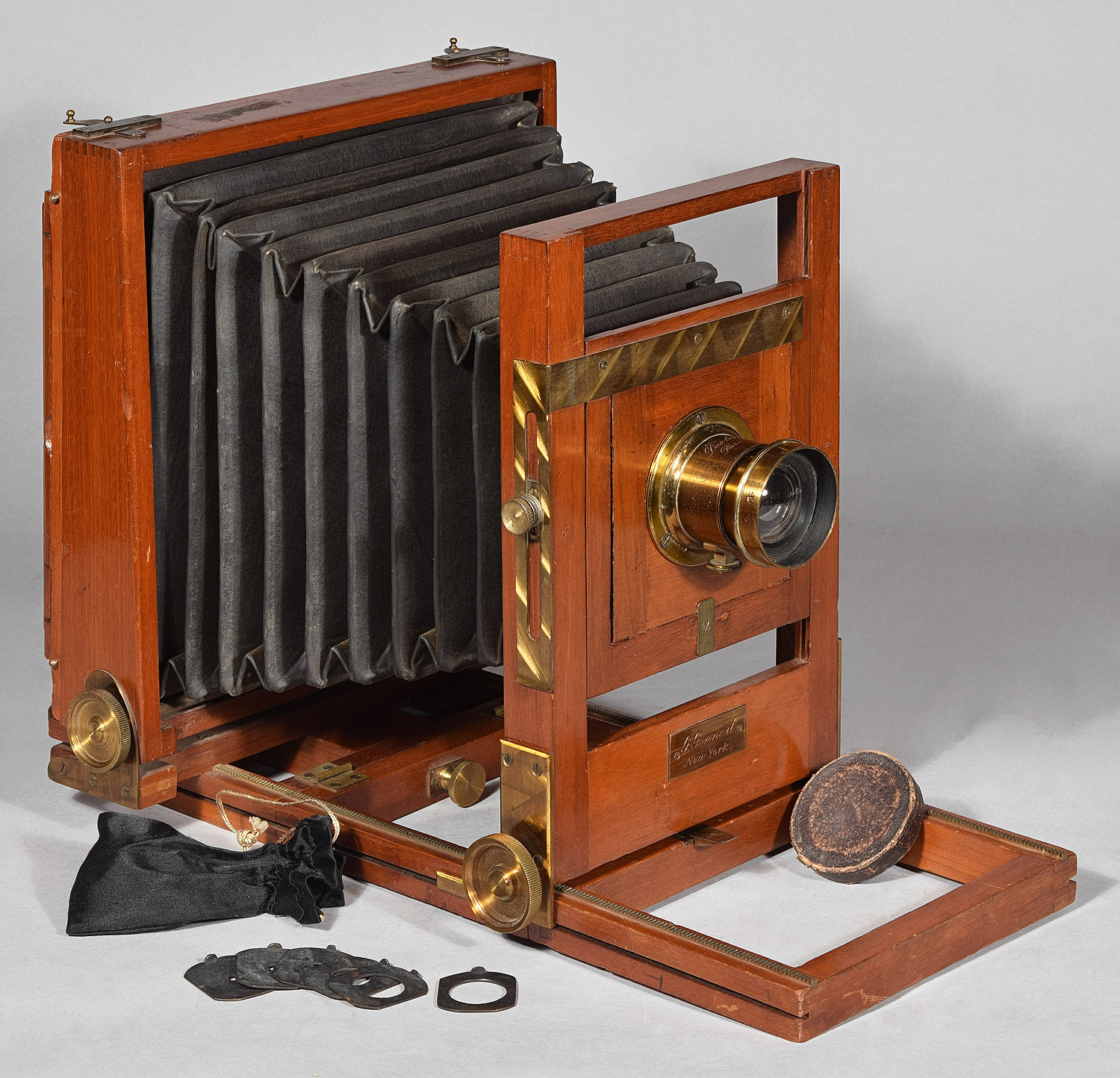
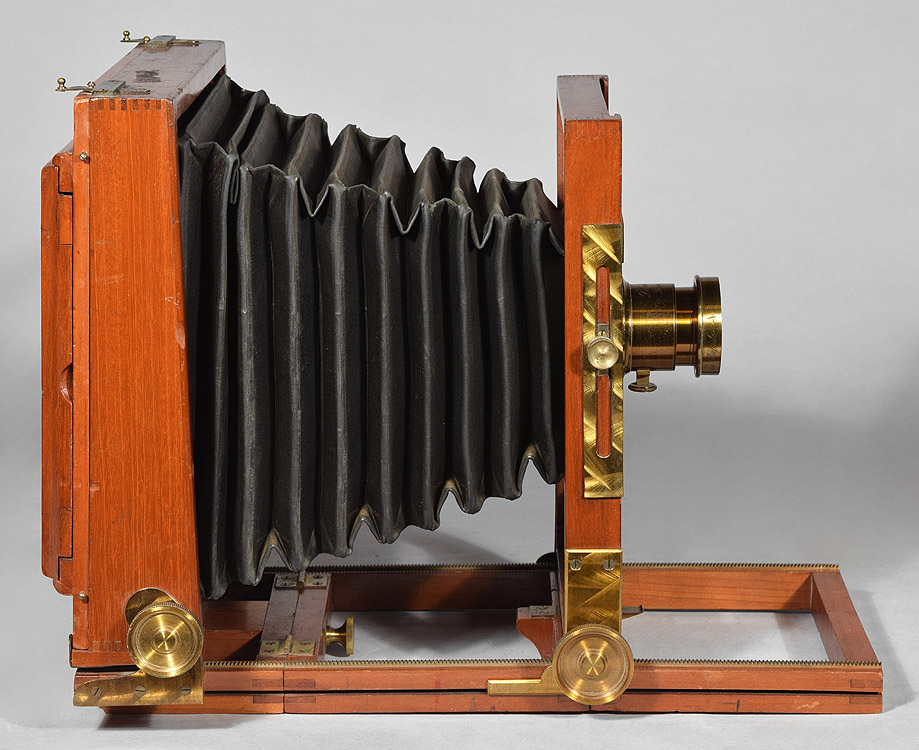
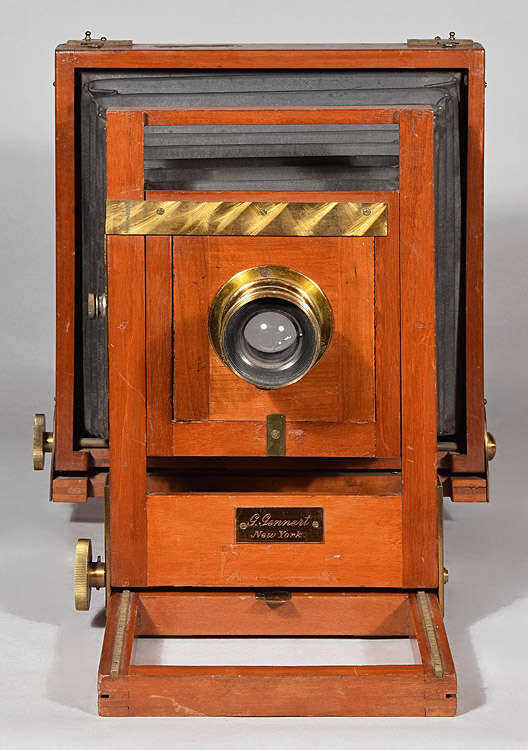
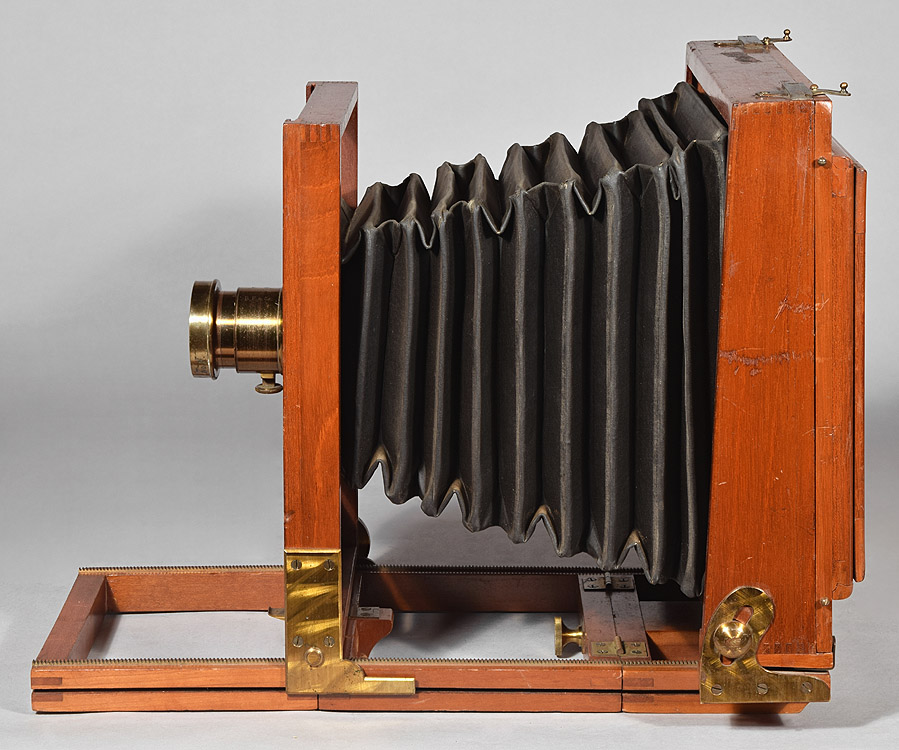
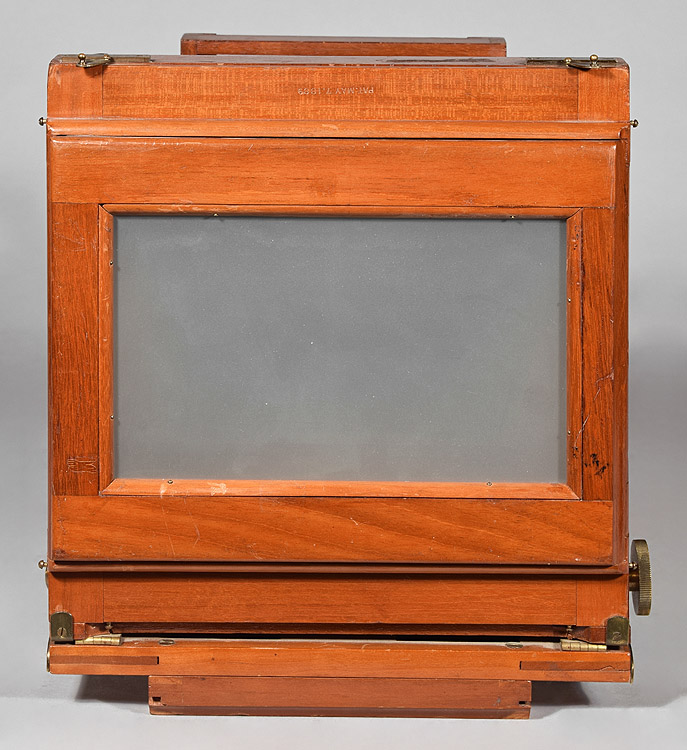
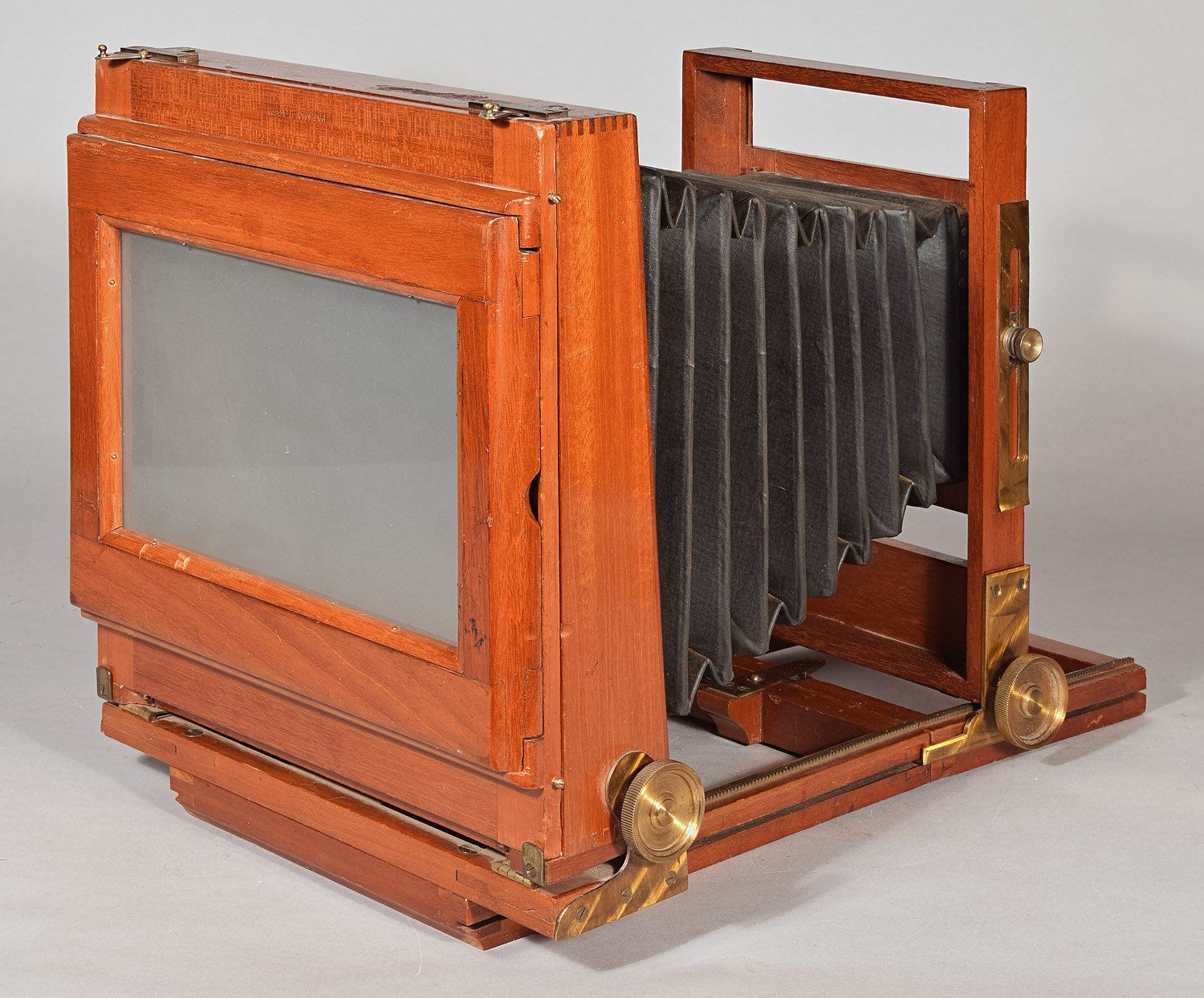
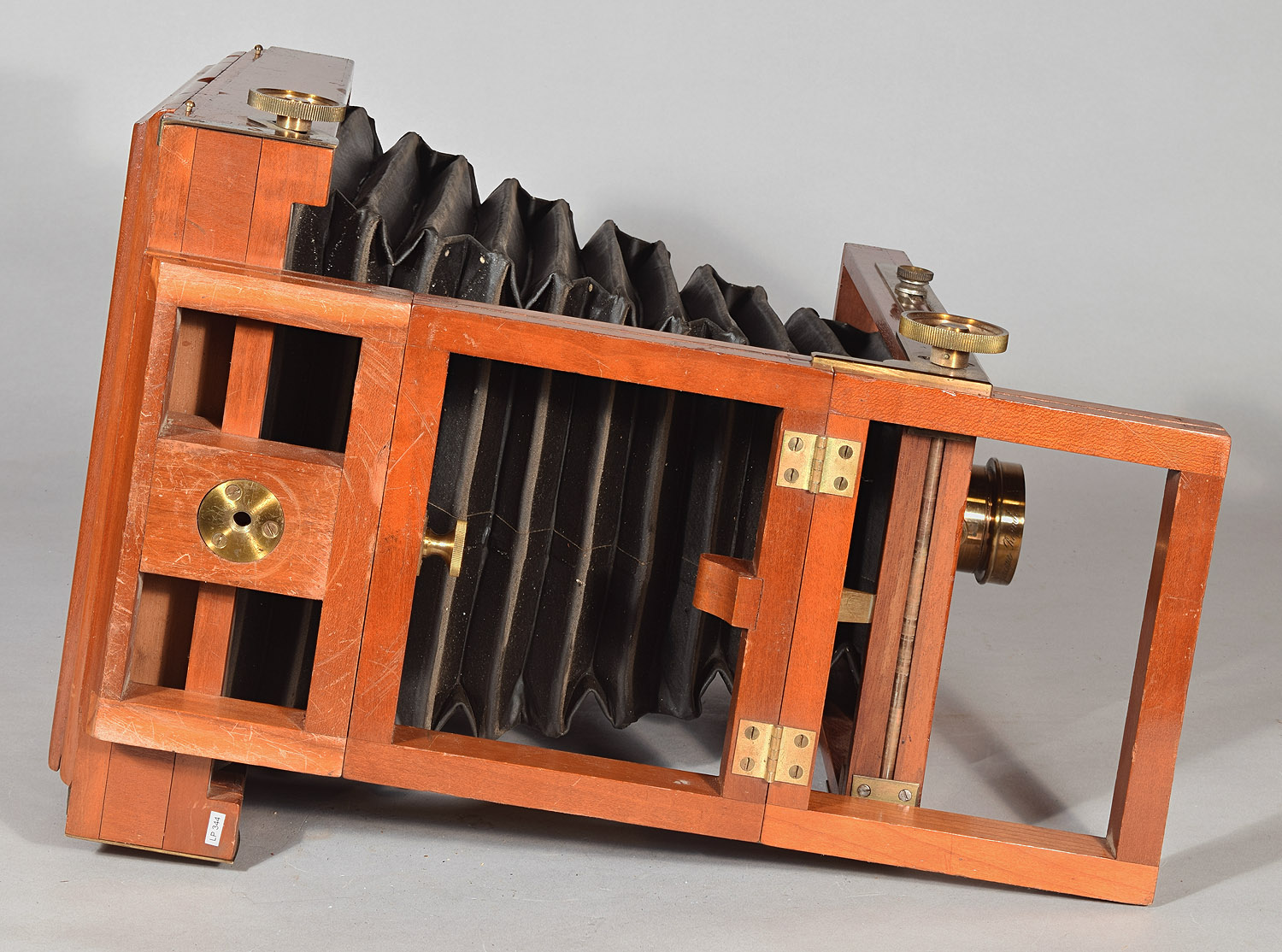
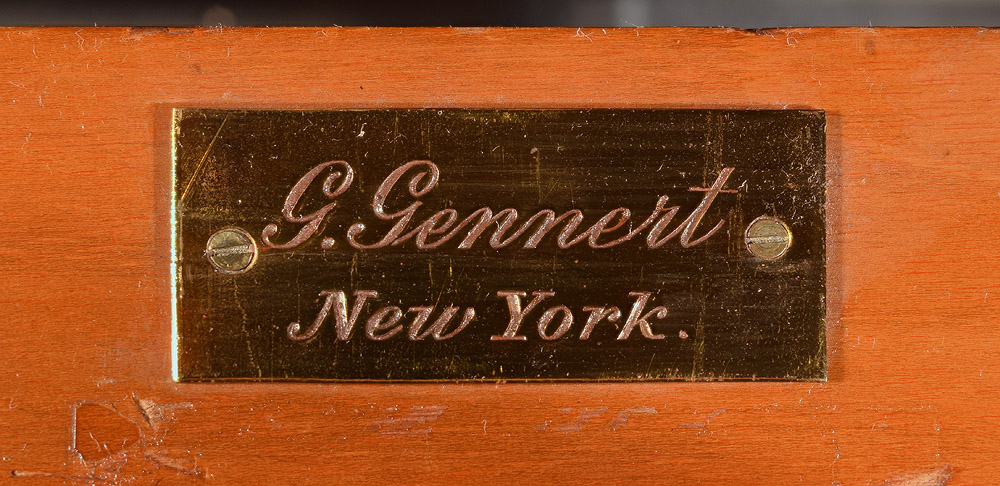

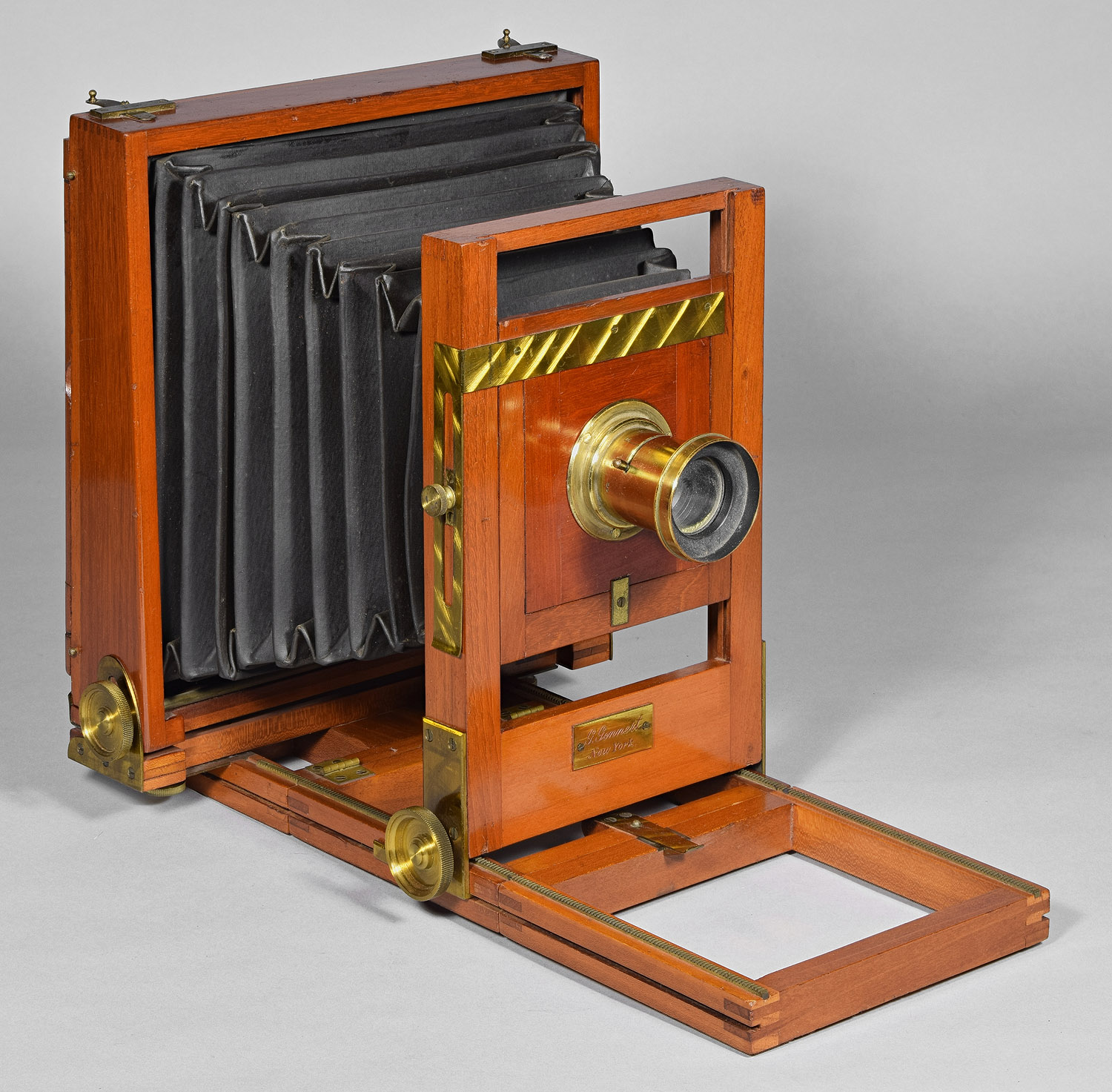
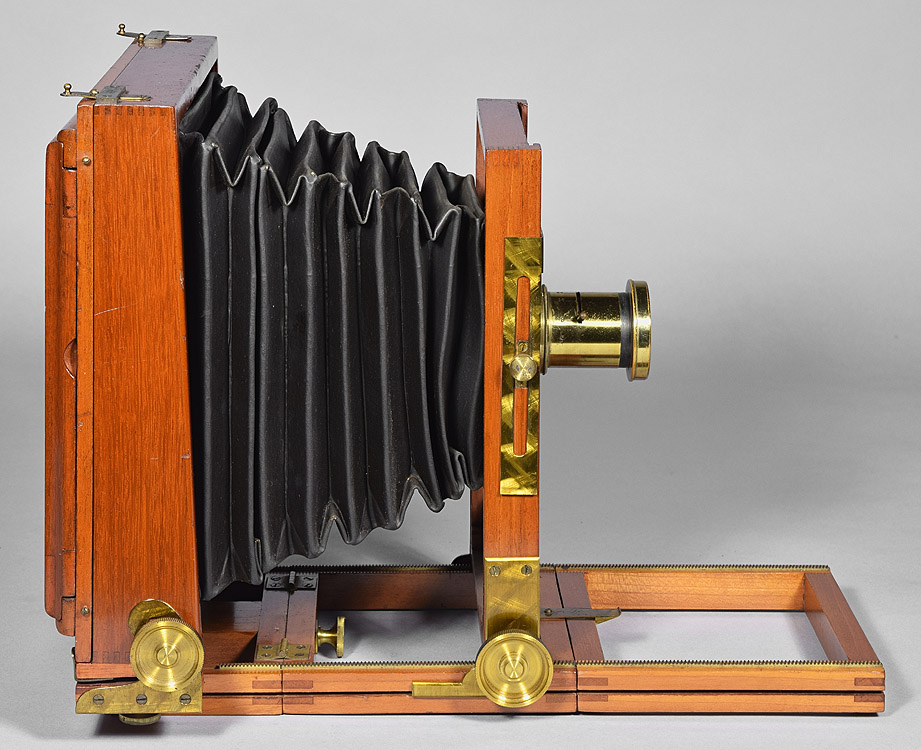
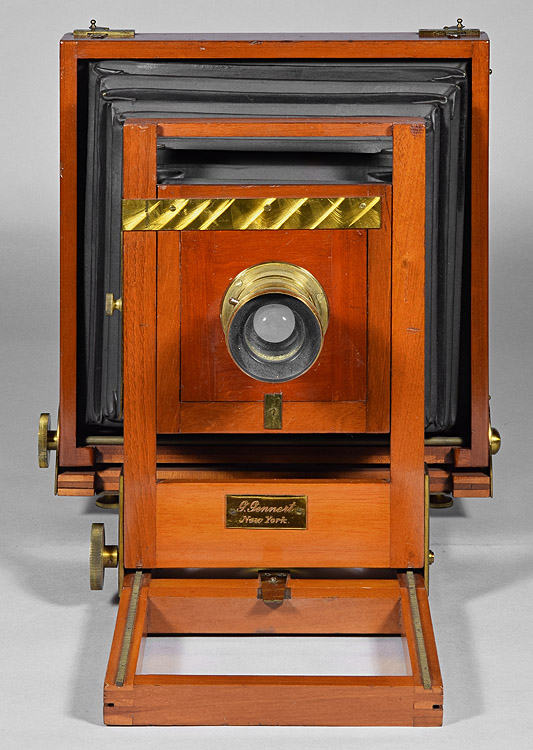
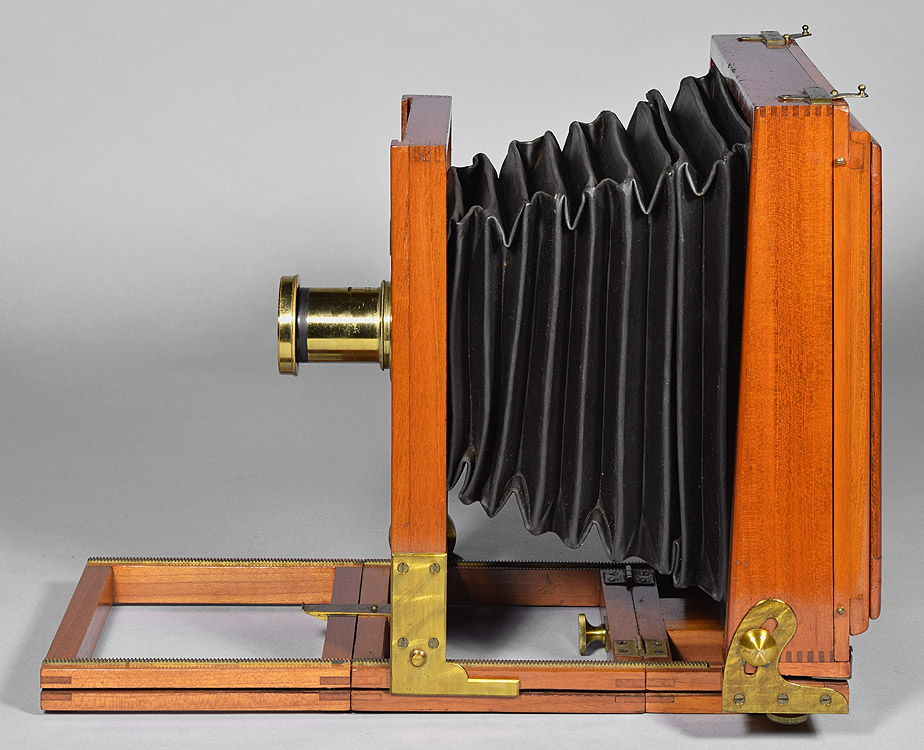
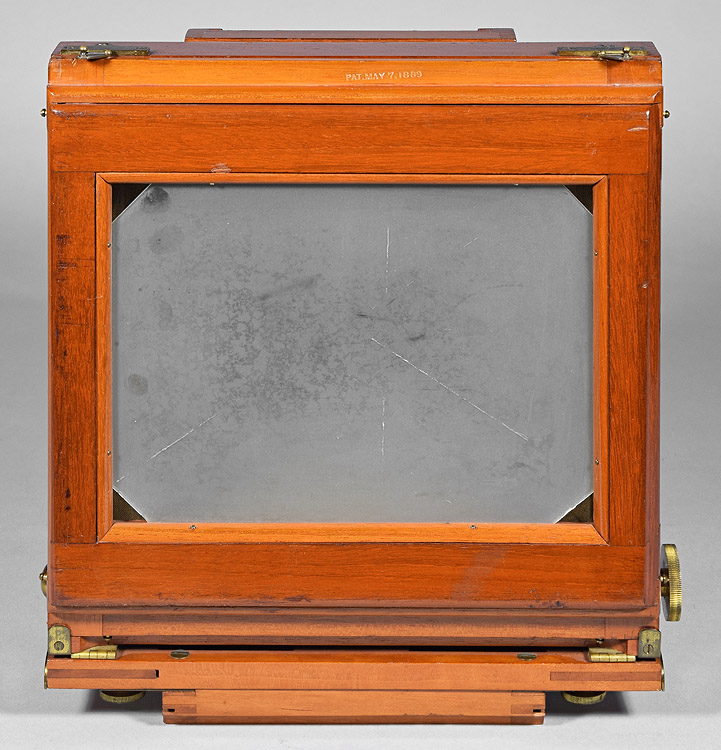
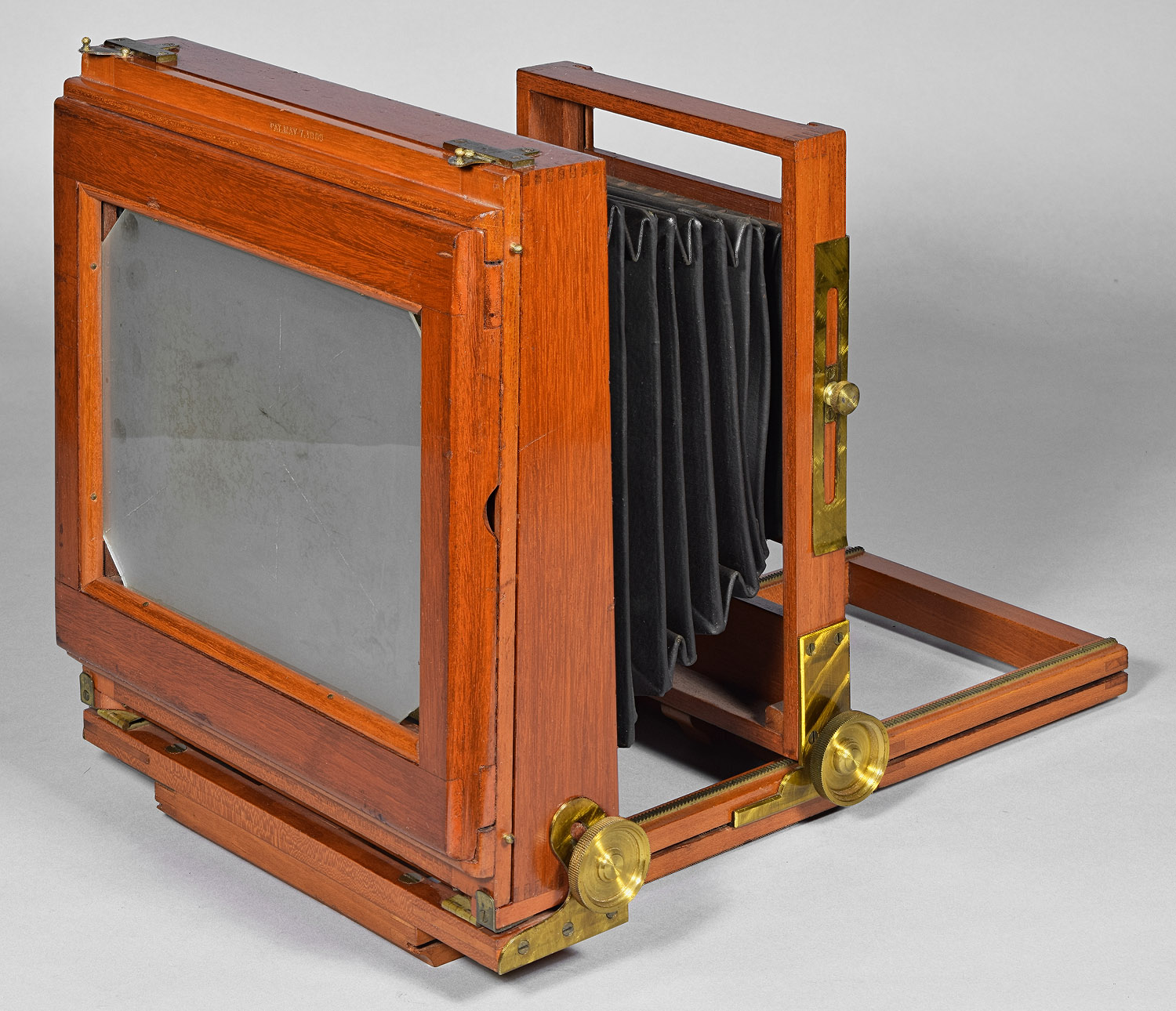
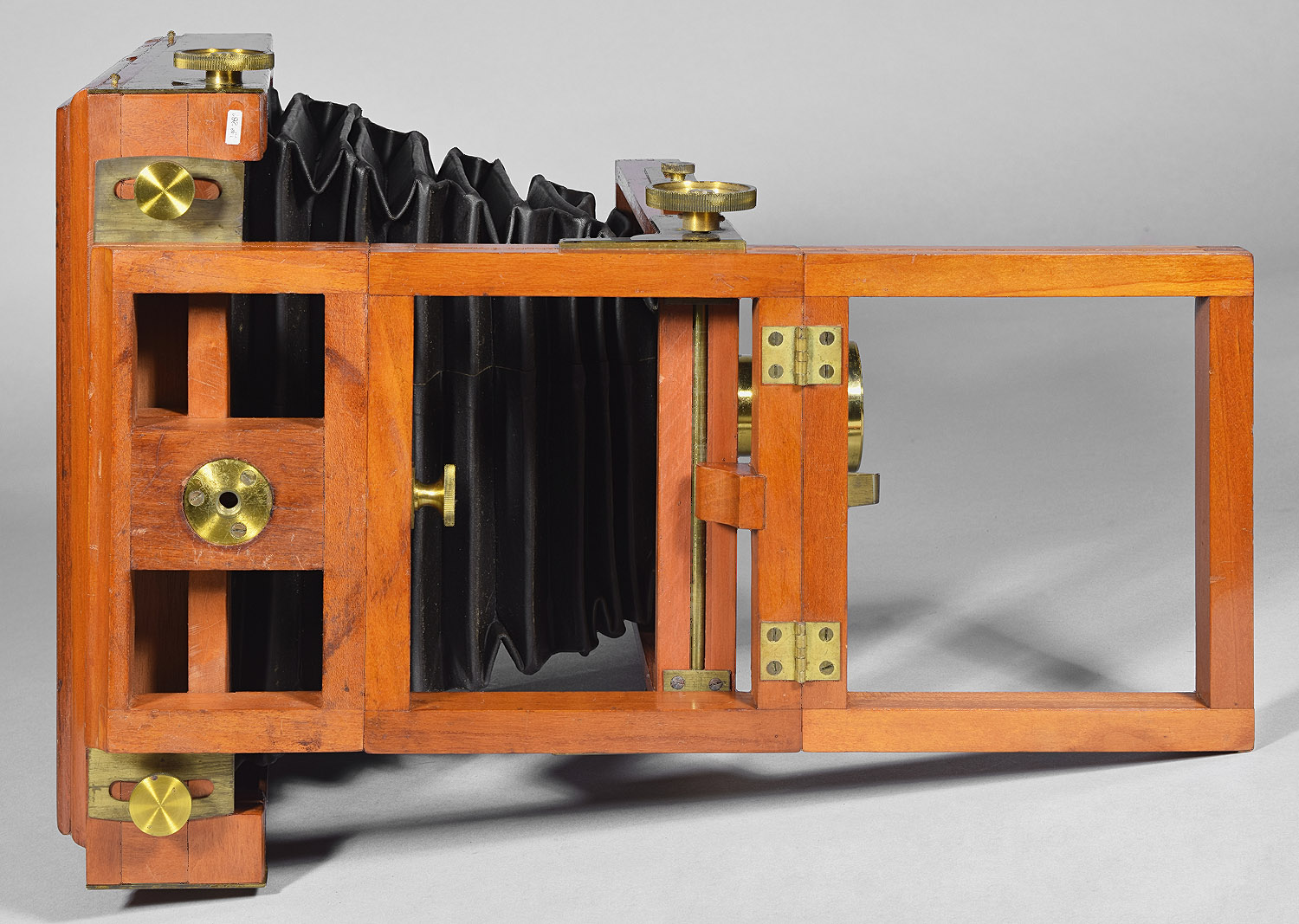



Construction: front focus
via rack and pinion (two gear tracks on top of base rails),
double swing, reversible by removable back
Materials: mahogany body, cherry
base, machine finished brass hardware, black fabric bellows,
French polish shellac finish.
Sizes Offered: 5x8, 6 ½x8 ½
Notes: similar to the Gennert
Brighton
Camera, but this camera is
front focus only, whereas the Brighton
is front and rear focus. The hardware clips for the
back are strikingly similar to Scovill's. The finish on this
camera is extremely well done. The ground glass is held in place
by wooden moldings, usually a sign of an early model or of an expensive
model. The tapering rear body of the camera is similar to the
Blair
Unknown #2. The reasoning behind the folding front section
of track is probably only to allow the use of extreme
wide angle lenses, since it wouldn't decrease the height of the
camera, nor would it allow the lens to remain in place during storage
(two common reasons for folding the front section). A
number of these have been offered on eBay, so they are not as rare as
some of the other Gennert cameras. The Prize Camera (1893)
came with "extra front board, double book plate holder, carrying case
and strap". The strap implies that the carrying case was canvas,
as the wooden ones are sufficiently held closed by a brass hook or other
fastener.
Descriptive Catalogue of Photographic Apparatus
and Supplies, G. Gennert
(New York, NY), c. 1893, p. 24-25
Wilson's Cyclopaedic Photography, Edward L. Wilson (New York,
NY), copyright 1894, p. 497

